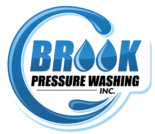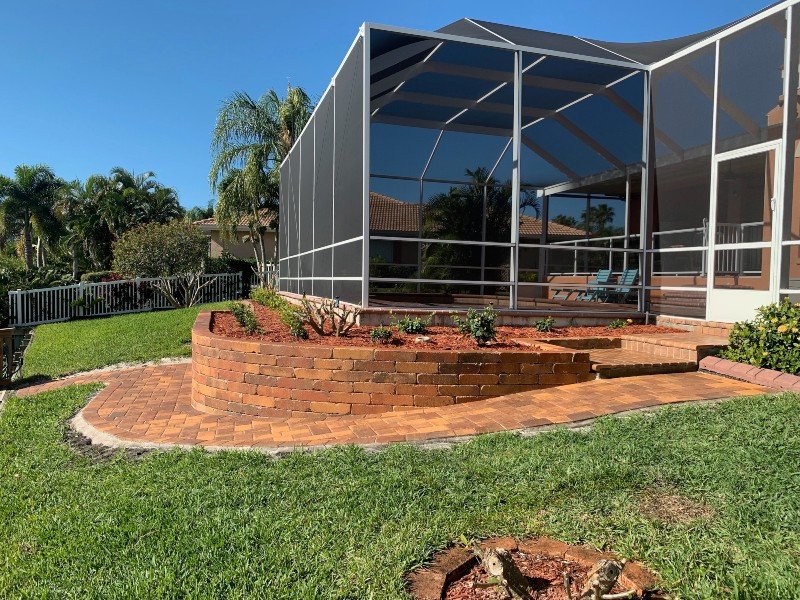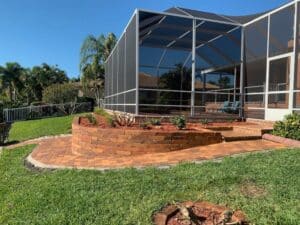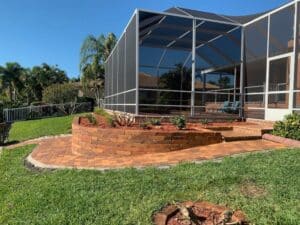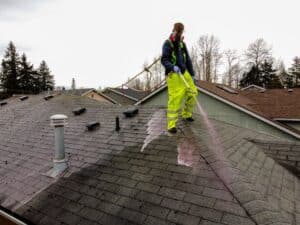Paver sealing is one of the best ways to protect and enhance the beauty of outdoor surfaces, but it’s also an easy process to get wrong. When done incorrectly, sealing can lead to an uneven finish, trapped moisture, or even long-term damage to the pavers. Homeowners who attempt DIY sealing often find themselves frustrated by unexpected results, and even some contractors without the right experience make mistakes. But professionals have learned through years of experience how to avoid these pitfalls and ensure a flawless finish every time.
Mistake #1: Sealing Too Soon After Installation
Excited to protect their investment, many homeowners and inexperienced contractors rush to apply sealer as soon as the pavers are installed. However, pavers need time to settle and release any excess moisture. Sealing too soon can trap moisture underneath, leading to a hazy or white appearance known as “blushing.”
How Professionals Avoid It: Experts know that patience is key. They allow pavers to sit for at least 30 to 60 days before sealing, ensuring that any efflorescence (the white chalky residue that can appear on pavers) has had time to surface and be removed. They also use moisture meters to check if the pavers are completely dry before applying any sealer.
Mistake #2: Skipping Proper Cleaning
Sealing dirty pavers is like waxing a dirty car – it locks in the grime rather than protecting the surface. Mold, mildew, and stains will still be visible beneath the sealer, and the finish won’t adhere properly.
How Professionals Avoid It: Before sealing, professionals thoroughly clean pavers using specialized cleaning agents and pressure washing techniques. They remove stains, weeds, and debris to ensure the surface is spotless. In some cases, they apply an efflorescence remover to eliminate any lingering mineral deposits.
Mistake #3: Applying Too Much or Too Little Sealer
Finding the right balance in application is crucial. Too much sealer can create a slippery, sticky surface that takes weeks to dry properly. Too little sealer, on the other hand, won’t provide adequate protection, leading to premature wear and fading.
How Professionals Avoid It: Experienced professionals use high-quality sprayers and rollers to apply an even coat. They also follow the manufacturer’s recommendations for coverage, ensuring the sealer penetrates properly without overloading the surface. When needed, they apply a second coat after the first has fully cured.
Mistake #4: Ignoring Weather Conditions
Sealing pavers on a humid or rainy day is a recipe for disaster. Moisture in the air or on the surface can prevent the sealer from bonding properly, leading to cloudiness, streaking, or peeling.
How Professionals Avoid It: Professionals always check the weather forecast before starting a sealing job. They avoid sealing on overly humid or rainy days and ensure temperatures are within the recommended range. They also check the surface temperature of the pavers, as sealing on a surface that is too hot can cause the sealer to evaporate too quickly and create an uneven finish.
Mistake #5: Choosing the Wrong Type of Sealer
Not all sealers are created equal. Some homeowners unknowingly purchase a low-quality sealer that doesn’t offer proper protection, while others choose the wrong finish, such as using a glossy sealer on a surface that should have a natural look.
How Professionals Avoid It: Experts select the right sealer based on the type of pavers, climate, and desired finish. They understand the differences between solvent-based and water-based sealers and choose the one that will provide optimal durability and aesthetics. They also consider factors like UV protection, slip resistance, and long-term maintenance needs.
Mistake #6: Not Allowing Proper Drying and Curing Time
Sealing pavers might seem like a quick process, but rushing the drying and curing time can ruin the results. Walking or driving on freshly sealed pavers too soon can leave marks and compromise the finish.
How Professionals Avoid It: Professionals set clear expectations for drying and curing times. They ensure foot traffic is avoided for at least 24 hours and vehicle traffic for 48 to 72 hours, depending on the sealer used. They also use signs or barriers to prevent accidental damage while the sealer is curing.
Mistake #7: Not Re-Sealing at the Right Time
Some homeowners assume that once their pavers are sealed, they never need maintenance again. Over time, exposure to sun, rain, and foot traffic wears down the protective layer, making it essential to reseal at the right intervals.
How Professionals Avoid It: Professionals provide maintenance schedules based on the type of sealer used and environmental factors. According to our fellow paver sealing pals at Xcellent
Xteriors it is best to reseal your pavers every 2 to 5 years, depending on wear and tear. It is also best to inspect your pavers regularly to determine when a new coat is needed.
Trusting the Experts for the Best Results
Paver sealing is an investment in both aesthetics and longevity. While DIY attempts and inexperienced contractors can lead to costly mistakes, professionals bring knowledge, precision, and the right tools to the job. By avoiding these common pitfalls, they ensure a durable, even, and beautiful finish that enhances any outdoor space.
When it comes to protecting your pavers, trusting the experts is always the best choice.
